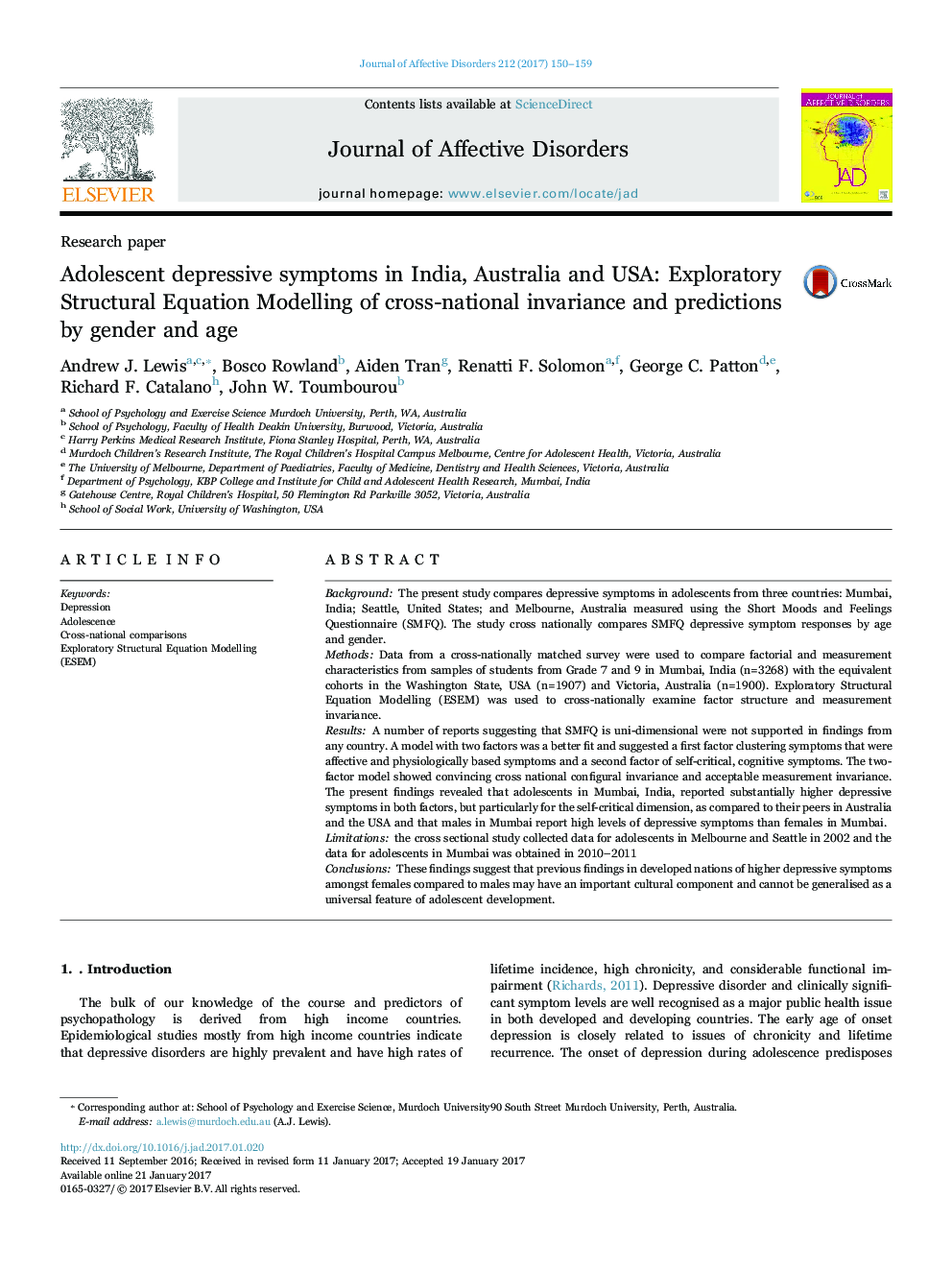| Article ID | Journal | Published Year | Pages | File Type |
|---|---|---|---|---|
| 5722436 | Journal of Affective Disorders | 2017 | 10 Pages |
â¢A commonly used measure of depressive symptoms, the Short Moods and Feeing Questionnaire (SMFQ) can be used to make valid comparisons between Indian and developed contexts.â¢We have shown that depressive symptom rates in Indian adolescents are high in comparison to an Australian and USA sample.â¢The common pattern of adolescent depressive symptoms being higher in females does not apply in this Indian sample.â¢The findings raise important questions about the cultural context of adolescent depression and the mechanisms which place females at greater risk of depressive disorders in adolescence.
BackgroundThe present study compares depressive symptoms in adolescents from three countries: Mumbai, India; Seattle, United States; and Melbourne, Australia measured using the Short Moods and Feelings Questionnaire (SMFQ). The study cross nationally compares SMFQ depressive symptom responses by age and gender.MethodsData from a cross-nationally matched survey were used to compare factorial and measurement characteristics from samples of students from Grade 7 and 9 in Mumbai, India (n=3268) with the equivalent cohorts in the Washington State, USA (n=1907) and Victoria, Australia (n=1900). Exploratory Structural Equation Modelling (ESEM) was used to cross-nationally examine factor structure and measurement invariance.ResultsA number of reports suggesting that SMFQ is uni-dimensional were not supported in findings from any country. A model with two factors was a better fit and suggested a first factor clustering symptoms that were affective and physiologically based symptoms and a second factor of self-critical, cognitive symptoms. The two-factor model showed convincing cross national configural invariance and acceptable measurement invariance. The present findings revealed that adolescents in Mumbai, India, reported substantially higher depressive symptoms in both factors, but particularly for the self-critical dimension, as compared to their peers in Australia and the USA and that males in Mumbai report high levels of depressive symptoms than females in Mumbai.Limitationsthe cross sectional study collected data for adolescents in Melbourne and Seattle in 2002 and the data for adolescents in Mumbai was obtained in 2010-2011ConclusionsThese findings suggest that previous findings in developed nations of higher depressive symptoms amongst females compared to males may have an important cultural component and cannot be generalised as a universal feature of adolescent development.
